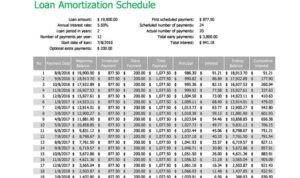Yo, check it out! We’re diving into the world of retirement accounts, breaking down the different types like 401(k), IRA, Roth IRA, and pension plans. Get ready for some awesome insights and tips on securing your financial future.
Types of Retirement Accounts
Retirement accounts are essential for saving up for your future and ensuring financial security during your golden years. There are several types of retirement accounts available to help you achieve this goal. Let’s take a closer look at some of the most common options:
401(k)
A 401(k) is an employer-sponsored retirement account where employees can contribute a portion of their pre-tax earnings. Employers may also match a percentage of these contributions. One key feature of a 401(k) is that the contributions grow tax-deferred until withdrawal during retirement.
Individual Retirement Account (IRA)
An IRA is a retirement account that individuals can open on their own, independent of their employer. There are two main types of IRAs: traditional and Roth. Traditional IRAs allow for tax-deferred growth on contributions, while Roth IRAs offer tax-free withdrawals in retirement.
Pension Plans
Pension plans are retirement accounts set up by employers to provide employees with a steady income during retirement. These plans are becoming less common in favor of 401(k) plans, but some companies still offer them as part of their benefits package.
Comparison and Contrast
– 401(k) and IRA both offer tax advantages, but 401(k) contributions are typically made through payroll deductions.
– Roth IRAs have income limits for eligibility, while traditional IRAs do not.
– Pension plans are funded by the employer, unlike 401(k) and IRA accounts where contributions come from the employee.
– Each type of retirement account has its own set of rules and regulations governing contributions, withdrawals, and tax implications.
Traditional IRA

A Traditional IRA is a retirement account where individuals can contribute pre-tax income, allowing their investments to grow tax-deferred until withdrawal during retirement.
How a Traditional IRA Works
In a Traditional IRA, individuals can contribute a certain amount of money each year, based on their age and income level. These contributions are often tax-deductible, reducing the individual’s taxable income for that year. The investments made within the account grow tax-deferred until withdrawals are made in retirement, at which point they are taxed as ordinary income.
Contribution Limits for a Traditional IRA
As of 2021, the contribution limit for a Traditional IRA is $6,000 per year for individuals under 50 years old, with an additional catch-up contribution of $1,000 for those 50 and older. These limits are subject to change based on IRS regulations.
Tax Advantages of Investing in a Traditional IRA
Investing in a Traditional IRA provides individuals with the opportunity to lower their taxable income in the current year by making tax-deductible contributions. Additionally, the investments within the account can grow tax-deferred, allowing for potential compounded growth over time.
Investment Options in a Traditional IRA
Some common investment options available within a Traditional IRA include:
- Stocks
- Bonds
- Mutual Funds
- Exchange-Traded Funds (ETFs)
- Certificates of Deposit (CDs)
Roth IRA
Roth IRAs are individual retirement accounts that offer tax-free growth and tax-free withdrawals in retirement. Unlike Traditional IRAs, contributions to a Roth IRA are made with after-tax dollars.
Key Features of Roth IRA
- Roth IRA contributions are not tax-deductible, but qualified withdrawals are tax-free.
- There are no required minimum distributions (RMDs) during the account holder’s lifetime.
- Contributions can be withdrawn penalty-free at any time, but earnings may be subject to penalties if withdrawn before age 59 ½.
Differences Between Traditional IRA and Roth IRA
- Traditional IRA contributions are made with pre-tax dollars, while Roth IRA contributions are made with after-tax dollars.
- Traditional IRAs have required minimum distributions (RMDs) starting at age 72, but Roth IRAs do not have RMDs during the account holder’s lifetime.
- Traditional IRAs offer tax-deferred growth, meaning taxes are paid upon withdrawal, whereas Roth IRAs offer tax-free growth and tax-free withdrawals in retirement.
Tax Treatment of Contributions and Withdrawals in Roth IRA
- Contributions to a Roth IRA are made with after-tax dollars and are not tax-deductible.
- Qualified withdrawals from a Roth IRA, including earnings, are tax-free.
- Non-qualified withdrawals of earnings may be subject to taxes and penalties.
Income Limits for Contributing to a Roth IRA
- For 2021, single filers must have a modified adjusted gross income (MAGI) of less than $140,000 to contribute to a Roth IRA. For married couples filing jointly, the limit is $208,000.
- There are phase-out limits for individuals with MAGI between $125,000 and $140,000 (single) or $198,000 and $208,000 (married filing jointly).
401(k) Plans
401(k) plans are a popular retirement savings option offered by many employers to help their employees save for retirement. These plans allow employees to contribute a portion of their salary to their retirement account on a pre-tax basis. Let’s dive into the features and benefits of a 401(k) plan.
Features and Benefits of a 401(k) Plan
- Employer Matching Contributions: One of the key benefits of a 401(k) plan is the potential for employer matching contributions. This means that your employer may match a portion of your contributions to the plan, effectively giving you free money to boost your retirement savings.
- Tax Advantages: Contributions to a traditional 401(k) are made on a pre-tax basis, meaning you can lower your taxable income in the year you make the contributions. This can result in immediate tax savings.
- Investment Options: 401(k) plans typically offer a range of investment options, allowing you to choose how your contributions are invested based on your risk tolerance and retirement goals.
- Portability: If you change jobs, you can typically roll over your 401(k) account to a new employer’s plan or an IRA, allowing you to continue building your retirement savings.
Traditional 401(k) vs. Roth 401(k)
- Traditional 401(k): Contributions to a traditional 401(k) are made on a pre-tax basis, meaning you don’t pay taxes on the money you contribute until you withdraw it in retirement. Withdrawals in retirement are taxed as ordinary income.
- Roth 401(k): Contributions to a Roth 401(k) are made on an after-tax basis, meaning you don’t get a tax deduction for your contributions. However, qualified withdrawals in retirement, including earnings, are tax-free.
Maximizing Your 401(k) Plan for Retirement Savings
- Contribute Enough to Get the Full Employer Match: Take advantage of your employer’s matching contributions by contributing enough to get the full match. This is essentially free money that can help boost your retirement savings.
- Consider Increasing Contributions Over Time: Aim to increase your contributions to your 401(k) plan over time, especially as your income grows or you receive raises. This can help accelerate your retirement savings growth.
- Review and Adjust Your Investment Options: Regularly review and adjust your investment options within your 401(k) plan to ensure they align with your retirement goals and risk tolerance. Consider seeking professional advice if needed.






